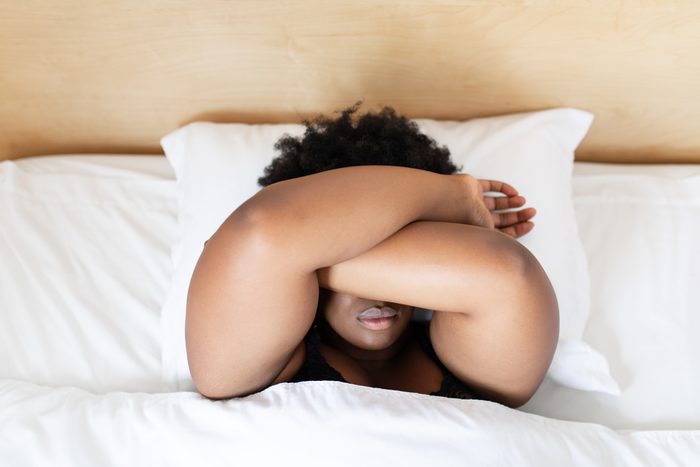
Stroke is the #3 killer of women
There’s a dangerous common belief that heart problems, including strokes, are more likely to affect men…so women don’t need to worry as much. But that myth puts women at risk, says Jennifer Haythe, MD, a cardiologist and co-director of the Columbia Women’s Heart Center at the Columbia University Department of Medicine.
In fact, Dr. Haythe says, “Women are not only more likely to have a stroke during their lifetime than men are, but they’re more likely to die from it.” She adds that higher estrogen levels may play a role, as estrogen can weaken blood vessels to make them more vulnerable to tears and blood clots. “Women have some unique risk factors for stroke, including pregnancy and taking hormones, like birth control pills or HRT.”
Indeed, over 500,000 US women have strokes each year and strokes kill about 85,000 women each year—making it the third-most-common killer of women, according to the American Stroke Association.
6 Ways Heart Disease Is Different for Women, Cardiology Experts Say
Why are signs of a stroke in women different?
The acronym FAST, developed by the American Stroke Association (ASA), describes the most common stroke symptoms:
- face drooping,
- arm weakness,
- speech difficulty,
- and time to call 911.
But while women can experience those signs, the American Heart Association says they are far more likely to report atypical stroke symptoms—such as headaches, fatigue, cognitive changes, generalized malaise, or weakness.
This can make it more difficult for women and those around them to recognize a stroke is happening, and it makes women more likely to be misdiagnosed. “We have no idea why the stroke symptoms might be different for women,” says Cheryl D. Bushnell, MD, professor of neurology at Wake Forest Baptist Health in Winston-Salem, NC. “We need research on this topic.”
But there’s good news for women: According to the CDC four out of five strokes are preventable.
Says Dr. Haythe, “Getting educated about your personal risk factors for stroke and the symptoms of strokes in women is one of the best things you can do to prevent or lower your risk of having a stroke.” (Here are 15 facts about strokes brain doctors wish you knew.)
Here are the signs and symptoms of stroke you need to be on the lookout for:
Get The Healthy @Reader’s Digest newsletter for wellness wisdom in your inbox daily
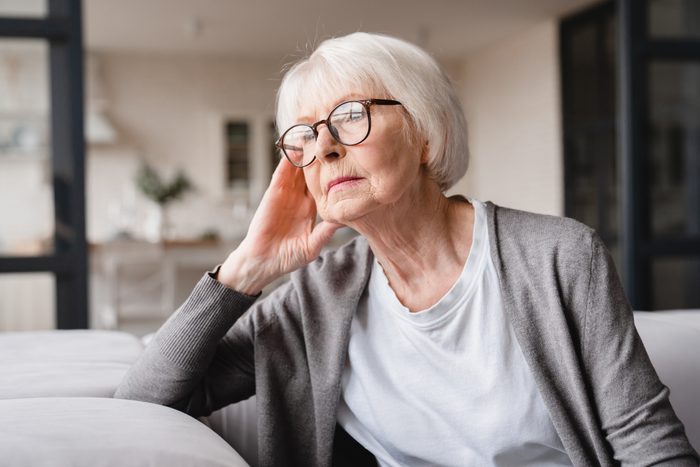
Spacing out
Difficulty speaking is one of the hallmark signs of a stroke but that can look different in women, says Dr. Haythe. While both men and women are likely to slur their words or have interrupted speech, women are more likely to have aphasia—difficulty understanding written and spoken language. Women with stroke-induced aphasia may appear to be forgetful, confused or “out of it” when in reality they are unable to understand and communicate language.
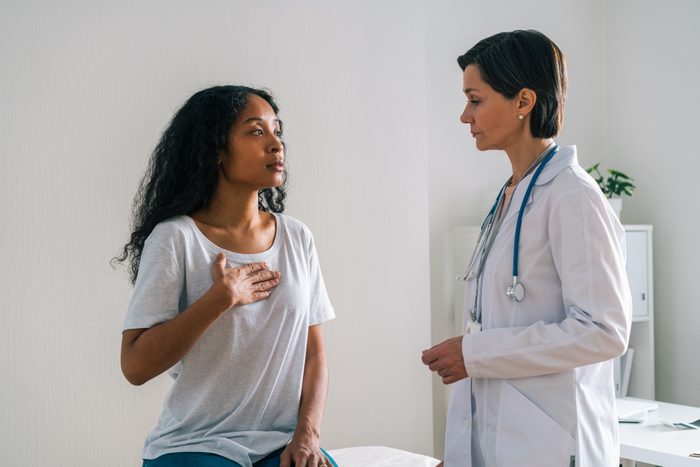
A “mini stroke” attack
Women are more likely to have a TIA, or transient ischemic attack—often described a “mini stroke.” A TIA is short period of time (usually just a few minutes) when someone experiences symptoms of a stroke, but then it stops.
These aren’t fakeouts, but are often precursors to a “real” stroke and should be taken seriously, says Dr. Haythe. Unfortunately, women are less likely to seek medical attention for TIA—and when they do, they’re 25% more likely to be dismissed or misdiagnosed than men with the same symptoms.
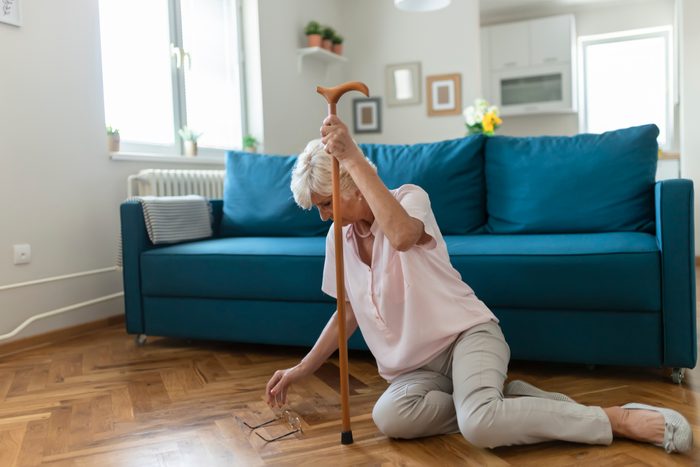
Fainting or seizures
You might be tempted to minimize a fainting spell, but it could be a stroke: Women tend to suffer strokes to the back of the brain more often than men, says Diana Greene-Chandos, MD, assistant professor of neurosurgery and neurology at The Ohio State University Wexner Medical Center in Columbus, Ohio. Known as posterior circulation strokes, they cut off “blood flow to the occipital lobes, brainstem, cerebellum, and part of the temporal lobe. The top of the brainstem is where the consciousness center lies,” Dr. Greene-Chandos explains, and cutting blood flow to this part of the brain can lead to fainting. She notes that fainting “could also be related to a hyperventilation response to any type of stroke, as a fear response,” and that seizures, another of the stroke symptoms in women, can also be confused with a loss of consciousness.
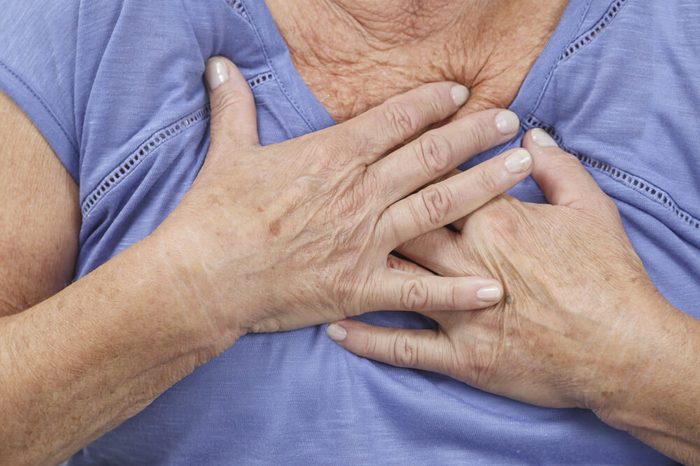
Difficulty breathing
Although women would think chest pain and shortness of breath are signs of a heart attack, it could be a stroke. “This is consistent again with posterior circulation problems from the bottom of the brainstem, where the respiratory drive centers lie,” says Dr. Greene-Chandos.
Early recognition of stroke signs is crucial, says Kathryn M. Rexrode, MD, chief of the Division of Women’s Health at Brigham and Women’s Hospital and an associate professor of medicine at Harvard Medical School in Boston. “It is important to get prompt emergency care if you are experiencing stroke symptoms, since some strokes can be stopped by use of thrombolytic, or clot-busting, drugs.”
FYI: These are the differences between a stroke and an aneurysm.

Hiccups
According to a survey from Dr. Greene-Chandos and colleagues at The Ohio State University Wexner Medical Center, just 10% of women surveyed knew that hiccups, combined with atypical chest pain, are among the early stroke symptoms in women. “Hiccups are consistent with posterior circulation problems from the brainstem,” Dr. Greene-Chandos says. “The brainstem holds swallowing and the drive to breathe,” along with other functions.
Keep in mind that this is an extremely rare symptom of stroke. There’s no need to run to the emergency room every time you hiccup!

Sudden behavioral changes or agitation
A shift in mental state may be a unique sign of stroke for women, according to the National Stroke Association. Dr. Greene-Chandos believes this could be consistent with a posterior circulation stroke, which could target areas responsible for memory and personality. However, the frontal lobe is also tied to personality, so behavior changes “could be due to a frontal lobe stroke as well,” she says.
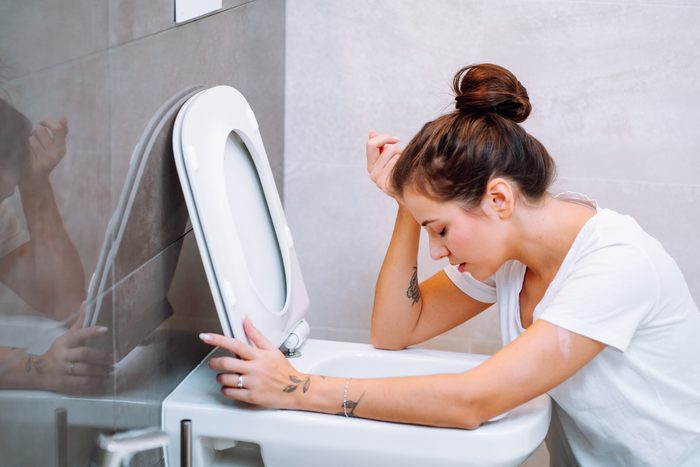
Nausea or vomiting
A stroke in the cerebellum can also lead to dizziness, nausea, and vomiting, Dr. Greene-Chandos says. “This is consistent with posterior circulation problems from either the brainstem or the cerebellum.” It can also be seen in intracranial hemorrhage-type of strokes as well, she says, in which a bulging blood vessel (an aneurysm) bursts and causes bleeding into the brain. Vomiting was a missed sign this 24 year old was heading for a massive stroke.
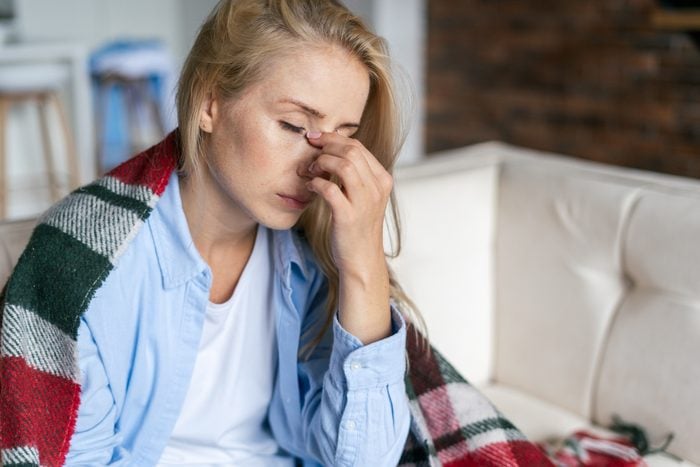
Hallucination
While changes in your vision are a relatively common sign, according to the National Stroke Association, women’s visual symptoms may include hallucinations. Your occipital lobes—”the powerhouse of interpretation of visual input,” Dr. Greene-Chandos says—can be damaged by posterior circulation problems. (This woman’s vision trouble was a sign of stroke, but she ignored it—read what happened.)
47 Secrets Hospitals Don’t Want to Tell You (But Every Patient Should Know)
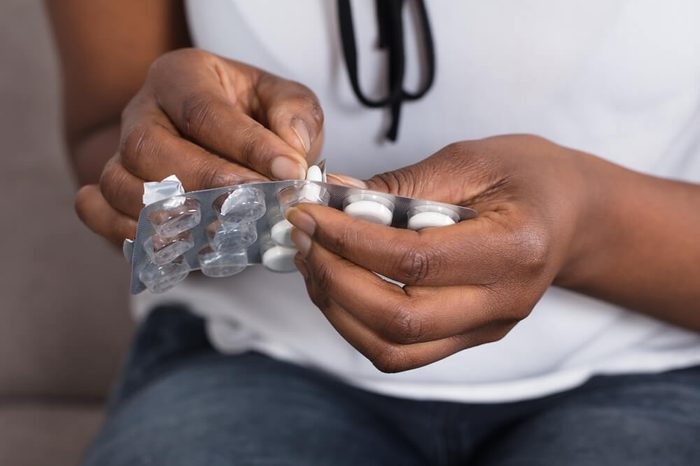
Taking birth control pills or HRT
In Dr. Greene-Chandos’ study, only 11% of women surveyed knew that taking hormones, like birth control pills or hormone replacement therapy (HRT), could raise stroke risk. According to the American Stroke Association, the pill can double your chances of having a stroke.
Research in 2018 by Dr. Rexrode looked at why these hormonal treatments are problematic. “Oral estrogens tend to increase clotting factors made by the liver, leading to a higher risk of blood clots,” Dr. Rexrode concludes.
Some women also see their blood pressure rise on oral contraceptive pills. Your doctor should take your blood pressure before prescribing the pills and watch for changes. If you already have high blood pressure, make sure to tell your doctor before taking the pill or HRT. Taking birth control pills is a stroke risk factor you can control.
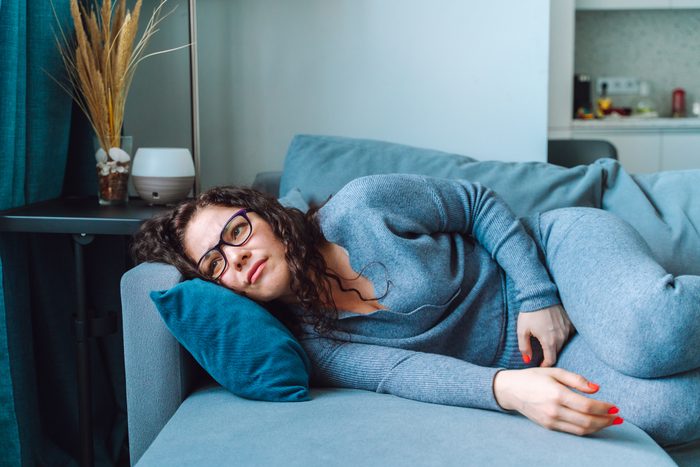
Early menopause or early menstruation
Starting either one of these life changes ahead of schedule can alter a woman’s risk, according to Dr. Rexrode’s research. Experiencing menstruation before 10 years of age, or menopause before a woman turns 45, can put her at higher risk of a stroke. “During the years that woman is menstruating, she produces higher levels of estrogen and other hormones,” Dr. Rexrode says. (You might be able to lower your stroke risk by eating this popular fruit regularly.)
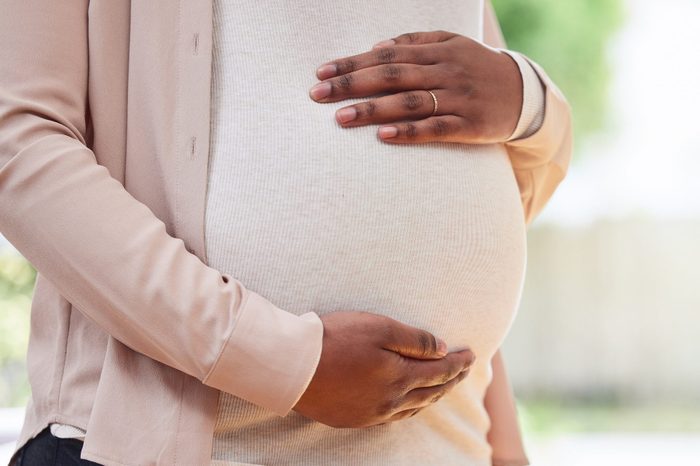
Some pregnancy complications
Preeclampsia is dangerously high blood pressure during pregnancy and a sign of stress on the circulatory system. Dr. Bushnell explains that preeclampsia can predict the risk of developing high blood pressure later in life and can also raise your stroke risk later on in life.
So can the pregnancy complication of gestational diabetes. “Also, gestational diabetes is associated with an increased risk of diabetes—both hypertension and diabetes are very important stroke risk factors.” That’s why the ASA’s new stroke guidelines for women, authored by Dr. Bushnell, recommend that doctors consider a patient’s health during pregnancy.
Dr. Rexrode notes that pregnancy itself also boosts stroke risk.
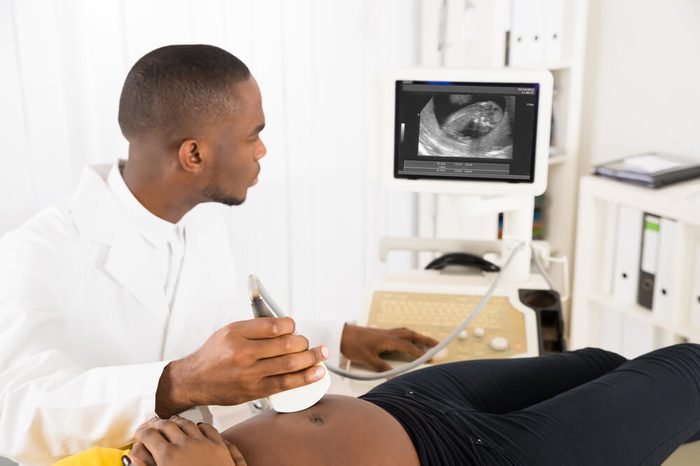
Multiple miscarriages
Unfortunately, unsuccessful pregnancies may also be a predictor of stroke risk, if the miscarriages were due to a clotting disorder, according to the American Stroke Association. “The clotting factors increase the risk of developing clots in the heart or in the blood vessels of the brain, both of which can lead to stroke,” Dr. Bushnell says. Another sign of a clotting disorder is a history of clots in the legs, also called deep vein thrombosis (DVT). (Make sure you know all of the silent blood clot symptoms to look out for.)
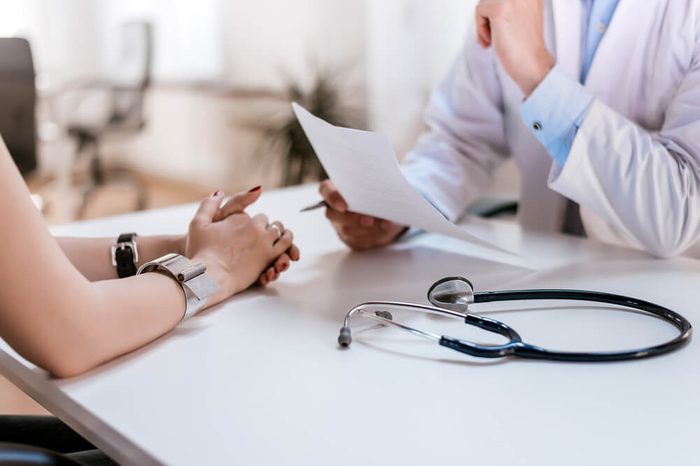
Low levels of a key hormone
Dr. Rexrode’s research identified another stroke risk in women: Low levels of DHEA (dehydroepiandrosterone). “DHEA, a hormone made by the adrenal glands, is used in the manufacture of other hormones including estrogens and androgens [male hormones],” she says. “It is not entirely clear whether low DHEA levels reflect some other underlying problem, or whether the effect on risk of stroke is through their influence on other hormone levels.”
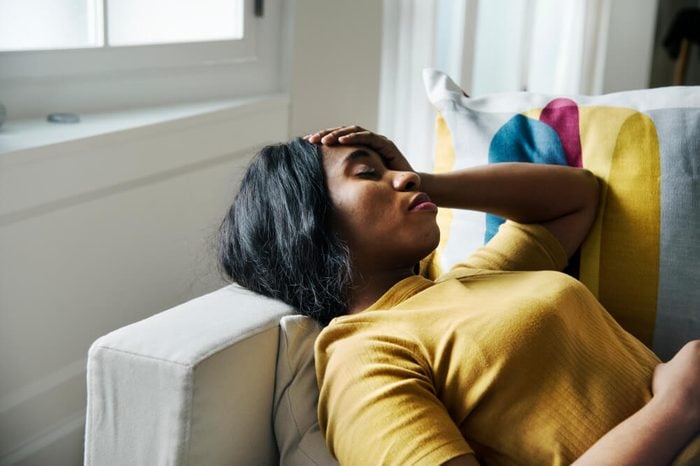
Migraines with aura
These vicious headaches are more common in women. According to the American College of Cardiology, having migraines with the visual disturbances known as auras is a risk factor for stroke. Dr. Greene-Chandos points out that migraines are known to constrict brain blood vessels, and that could contribute to cutting off blood supply to the brain. “This increases the risk of stroke,” she says. (Here are other reasons you may be getting migraines.)
The Actual Reasons Lamps Are Better for Your Health Than Overhead Lights, Says an MD

Autoimmune disease
Women are also more likely than men to have autoimmune conditions like lupus, Dr. Greene-Chandos says. Recent research out of Spain shows that autoimmune diseases can raise the risk of stroke and cardiovascular disease.
The link may be inflammation, says Dr. Green-Chandos: “Autoimmune inflammatory conditions put women at risk for inflammation of the cerebral vasculature [blood vessels].” (Don’t miss these 10 foods can cut your risk of stroke.)
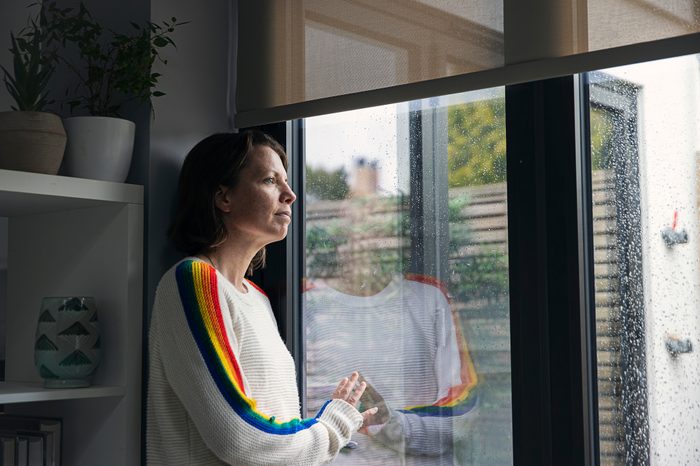
Mental health problems
Although the connection between mental health and stroke isn’t clear, scientists have found that stress is a risk factor for high blood pressure and cardiovascular problems—and women may be uniquely susceptible to stress, says Dr. Bushnell. A preliminary study from Harvard found that heightened activity in the amygdala, the area of the brain involved in the stress response, was associated with a greater risk of stroke. These five-second strategies can shut down stress ASAP.
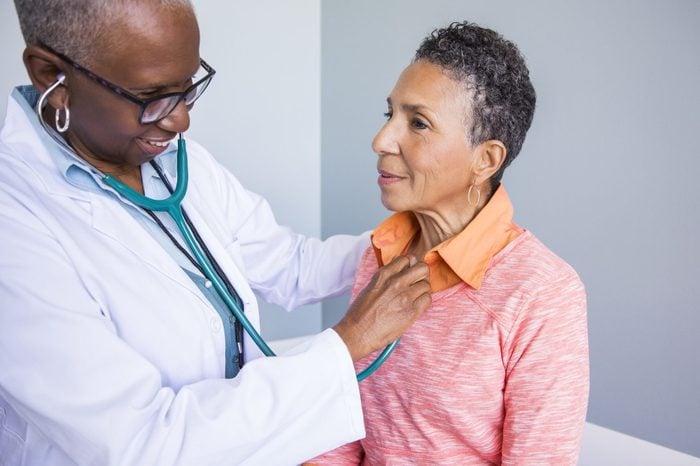
Irregular heartbeat
Officially known as atrial fibrillation (AFib), this symptom is particularly concerning as women age. According to the American Heart Association (AHA), women with untreated AFib have five times the risk of stroke. “Atrial fibrillation leads to blood clot formation in the heart, which can then break off and lodge in a blood vessel in the brain,” Dr. Bushnell says. Next, check out these 30 ways to reduce your risk of stroke.
- Why Katie Couric Says Being a “Little More Neurotic”About Health Is Smart
- 8 Calcium-Rich Foods for Strong, Healthy Bones
- This Is the Rarest Hair and Eye Color Combination in Humans
- Can You Get Vitamin D Through a Window? Doctors Explain
Additional writing and reporting by Charlotte Hilton Andersen.

